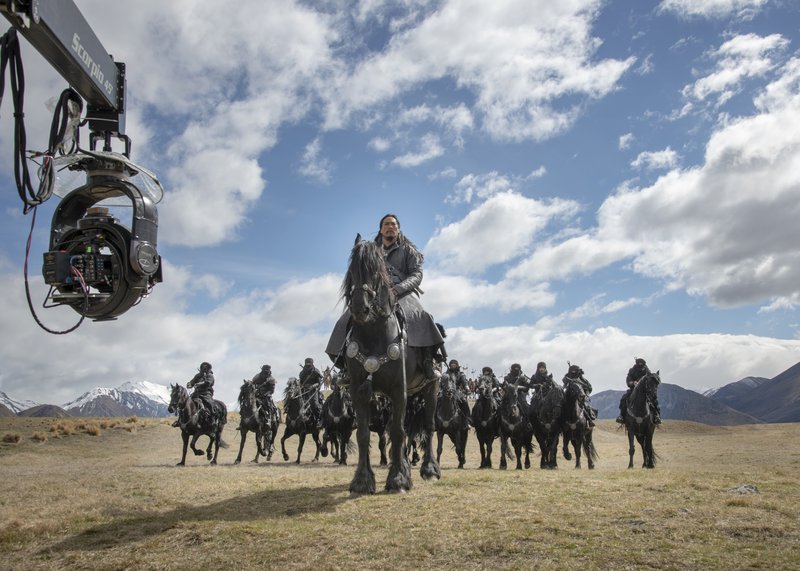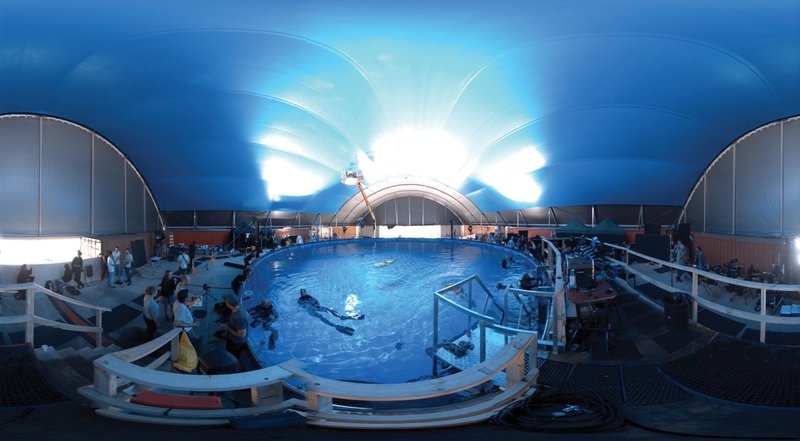22 Mar 2021
The New Zealand film industry is making a significant contribution to the country’s economy. It’s a continually evolving sector, and engineers are being credited as “an essential part of this evolution”. So where, and how, are they having the most impact?
While some industries are struggling to keep afloat in the light of Covid-19, the New Zealand film industry is remarkably buoyant. The screen industry is worth approximately $3.3 billion per annum, employing 16,200 people, according to Associate Minister for Arts Culture and Heritage Carmel Sepuloni. In July 2020, the Government announced a screen sector support package to protect Kiwi jobs and investment in New Zealand productions.
“The Screen Production Fund of $73.4 million ensures more than 230 productions that employ thousands of New Zealanders are not abandoned due to additional costs incurred as a result of Covid-19. It also protects an estimated $250 million of public funding already invested in them,” Minister Sepuloni said at the time.
This can only mean good news for engineering, as New Zealand Film Commission Chief Executive Annabelle Sheehan says engineers are very much a part of this landscape.
“The screen industry uses all different kinds of equipment around production and post-production,” she says.
“These aspects of construction, visual effects, cameras and lighting are continually evolving in our industry. Engineers are an essential part of this evolution. Whether it’s virtual production working on 2D and 3D animation using state of the art technology, or building sets and stages, engineers are impacting all of these spaces.”
Fast-paced lifestyle
One engineer in particular demand right now is Nick Barnfield CMEngNZ, a structural engineer based in Auckland. After qualifying in 1975, he soon became intrigued by the fast-moving film and live events industry, where sets needed to be built quickly and safely. A chance encounter in the live events arena led Nick to swap his office job for a life touring the world.
“It was an exciting time,” he says. “We literally sketched out designs on the floor of the workshop of whatever it was we were building and went from there.”
Responsible for the design and build of the first truss grid system in New Zealand in the 1980s, Nick forged the way for film and live event crews in New Zealand using stages and grids that could suspend people, cameras, lights and other equipment.
“Once the Health and Safety Act got some teeth, I saw an opportunity to set myself up freelance,” he says. “My practical knowledge and experience together with an engineering degree gave me the perfect opening into the film industry.”
Now in his late sixties, Nick is looking to the future and is working alongside a “prot.g.”, Ryan Hayden MEngNZ, to pass on his knowledge to the next generation.
“Ryan is a young mechanical engineer who’s learning fast. He’s bright, he’s keen, and he never gives up,” says Nick.
“That’s what you need in this industry. You have to be passionate about it. There’s no time for contracts or specifications, and it’s demanding, so you need to have a versatility about you, and the ability to develop trust.”
Whether it’s virtual production working on 2D and 3D animation using state of the art technology, or building sets and stages, engineers are impacting all of these spaces.

Behind the camera with Disney's Mulan. The blockbuster was largely filmed in New Zealand with input from Kiwi engineers. Image: Jasin Boland © 2019 Disney Enterprises
An asset in Auckland
Over recent years, Nick has been involved in the redevelopment of the Kumeu Film Studios (KFS) in Auckland, specifically the design and construction of the outdoor ocean tank, indoor dive tank and green screen. The newly converted screen production complex officially opened in mid-2018.
The 27-hectare site includes a covered underwater dive tank and an outdoor ocean surface tank with a permanent 864m2 green screen. Blockbusters such as The Meg, Mulan and Avatar have all been shot there. And with more major international productions in the making, it’s a massive asset to the industry.
“Most recently, the development of a rigging system allows the production team to control daylight light levels over the ocean tank,” says Nick.
With a volume of 2.5 million litres, this tank is the only one of this size and type in New Zealand and adds to the portfolio of production infrastructure available in the country today.
Engineers take centre stage
Neil Kirkland is a film construction supervisor who works closely with Nick and was heavily involved in the redevelopment of KFS. Originally trained as an architect, Neil often engages engineers to ensure buildings are safe and comply with council regulations.
“Essentially, we are satisfying the council that the work is compliant with local by-laws and the Building Act. The engineer will issue the producer statements to the local authority, typically under Clause 2 of Schedule 1 of the Building Act in the case of most sets,” says Neil.
And it was not just structural engineers that took centre stage in this project. KFS also needed civil engineers to ensure a heated water supply to the tanks, wastewater management and stormwater disposal. With the site being located in a flood zone and water supply coming from bores, there was plenty of complexity in the repurposing project.

Indoor dive tank at Kumeu Film Studios. Image: Manu One
Fast footage
Auckland-based software company Moxion won the top engineering accolade at the 2020 Hollywood Professional Association Awards. The Immediates platform allows film professionals to see footage immediately, from anywhere in the world. Known as “instant dailies”, Immediates enables studio executives to confirm they have the shot required and if not, the actors and crew are still in the building and can immediately reshoot.
“Studios are fearful about data breaches and the release of plot or imagery ahead of the scheduled release date,” says Rory MacGillycuddy, Chief Operating Officer at Moxion.
“Our platform has all the benefits of digital technology while offering world-leading security and distributing to approved viewers around the world within minutes of creation.”
Founded as a start-up in 2014, co-founders Hugh Calveley and Michael Lonsdale have recently hired a Masters graduate in Engineering, with a specialisation in software engineering, to add new features.
“It’s an exciting time to be part of the team,” says Rory. “We continue to broaden our client base, selling to major US film studios.”
Acoustic engineers were also required to advise on how best to keep the noise out. Fire engineers were needed to design fire suppression systems, hydraulic engineers and civil engineers for earthworks, mechanical engineers for air handling, and electrical engineers for dealing with the high electrical demand on the new sound stages.
As complex as the sets are, it’s the camera that is king. Neil explains: “We have to respect the camera. We may need floating walls to allow the camera to move into the set space, or structures with high-access loading capacity. Engineers are essential to help us figure out what structural systems we should use.” After filming has finished, the team do everything they can to recycle the structural materials.
“There is a big emphasis on recycling materials and to avoid pouring concrete in-situ,” says Nick. “Particularly when we are on location, on farmers’ properties or DOC land, for example. We have to make sure we do everything to ensure a high level of reinstatement.”
Oscar-winning production designer Grant Major also works closely with engineers – structural engineers in particular. He describes his role as “world building”, and he travels worldwide to manage the overall visual appearance of films. In his 45-year career, he’s worked on films including the Lord of the Rings trilogy, Mulan and most recently the Netflix series Pieces of Her, based on the best-selling novel by Karin Slaughter.
“We involve engineers in our larger set designs, who help realise their structural integrity,” says Grant. Being show business, the structures are often unusual and complex. Added to that they can sometimes be located in isolated windy valleys, with historical heritage and planning restrictions. These structures are always temporary.
“We built a mansion fa.ade in the upper Ida Valley in the South Island, where we needed the services of structural engineers to help stand up the building in one of the windiest valleys in the whole country. Being a temporary structure and without an inside, it was a difficult build, and the engineers did a wonderful job for us.”
Digital transformation
Weta Digital is known for ground-breaking work in visual effects and animation, recognised for performance-driven animated characters such as Gollum, Kong, Neytiri and Caesar, and worlds such as Middle-earth and Pandora. And the company understands the importance of engineers.
“I see engineers at Weta Digital as a critical component to the film industry,” says Kimball Thurston, Head of Engineering at Weta Digital.
“Particularly here at Weta, we build many of the tools the artists use. We develop unique solutions that may include custom software developed in-house, or plug-in additions to existing industry-standard software.”
In particular, demand right now are machine learning techniques (AI) and software engineers with strong maths skills. One such engineer is Samantha Lok, who has been working with Weta Digital as a software engineer since graduating from Victoria University of Wellington in 2015.
“My degree has helped prepare me for the work I do now. There are many similarities between how software is written at Victoria University and Weta Digital,” she says.
“It’s fun and fast-paced. I specialised in machine learning through my degree, and now I am doing projects in 3D scene reconstruction, which is massive in the movie community right now.”
Samantha is currently seeking to solve the problem of digitally filling in the paint frame when actors on green screens are taller than their digital characters. At present, gaps are filled frame by frame, so her research and testing has the potential to save hundreds of thousands of hours’ work. In essence, she’s creating a more authentic viewing experience.




